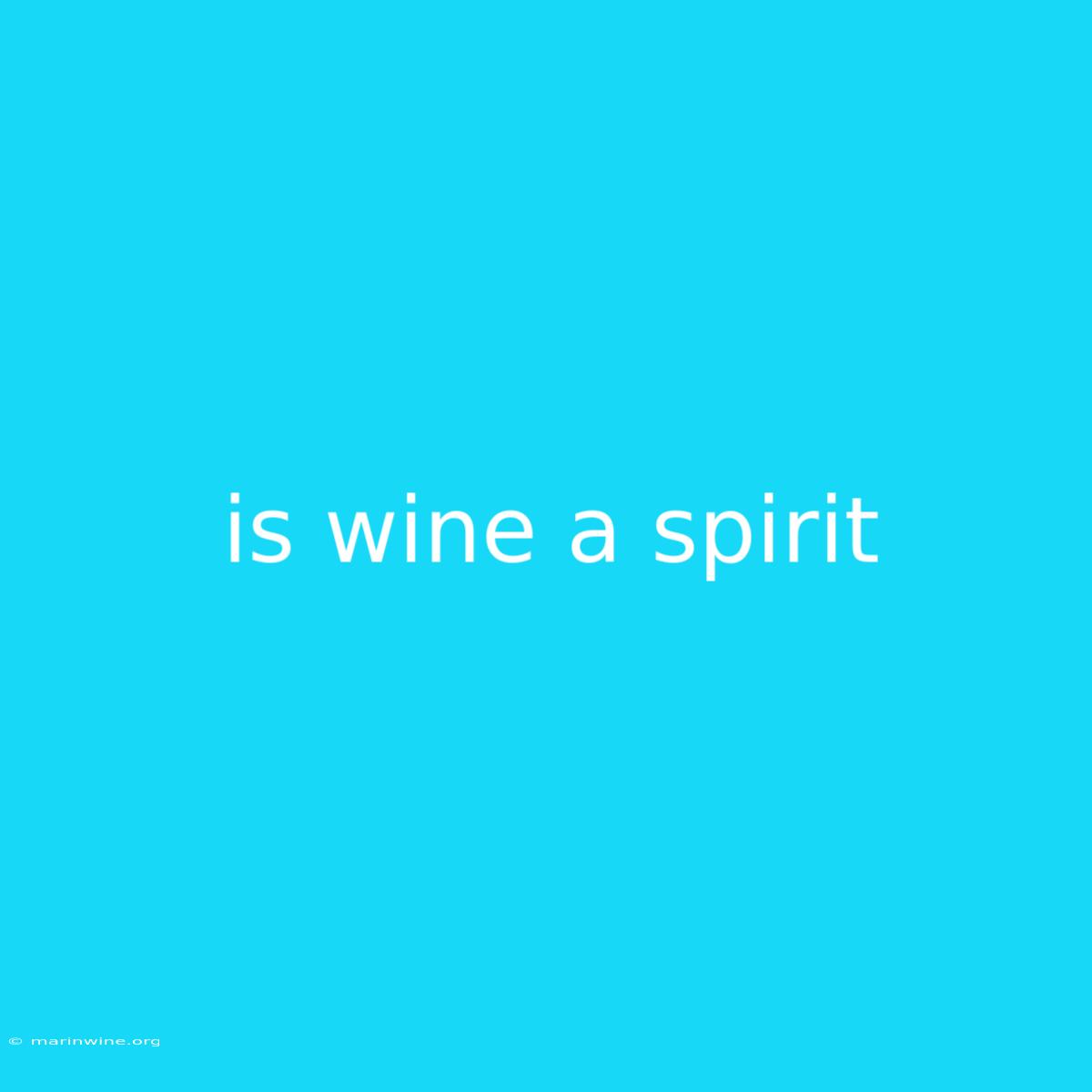Is Wine a Spirit? Uncorking the Truth Behind the Beverage
Have you ever wondered if wine is truly a spirit? It's a question that often arises, given the intoxicating effects and the presence of alcohol. But the truth is, wine is not a spirit, but a fermented beverage. Let's delve into the world of spirits and wines to understand why this is the case.
Why It Matters
Understanding the difference between wine and spirits is crucial for appreciating the distinct characteristics and production processes of each. This distinction also helps in navigating the vast world of alcoholic beverages, allowing you to choose the right drink for every occasion.
Key Takeaways
| Feature | Wine | Spirits |
|---|---|---|
| Production | Fermented from grapes | Distilled from fermented liquids |
| Alcohol Content | Typically 10-15% ABV | Higher, typically 35-60% ABV |
| Taste Profile | Varied, influenced by grapes, terroir, and aging | Diverse, ranging from subtle to complex |
| Consumption | Usually enjoyed neat or in cocktails | Often enjoyed neat or mixed with mixers |
Wine: A Fermented Masterpiece
Wine is created through the fermentation of grape juice, where yeast converts sugars into alcohol. This process involves several steps:
- Harvest: Grapes are harvested at optimal ripeness.
- Crushing: Grapes are crushed to release juice and skins.
- Fermentation: Yeast converts sugars to alcohol and carbon dioxide.
- Aging: Wine is matured in oak barrels or stainless steel tanks.
Spirits: The Essence of Distillation
Spirits, on the other hand, are distilled beverages. This process involves:
- Fermentation: A base liquid like grain, fruit, or sugar is fermented.
- Distillation: The fermented liquid is heated, separating the alcohol from water.
- Aging: Some spirits are aged in oak barrels to develop flavor.
The Distinction: Fermentation vs. Distillation
The defining difference between wine and spirits lies in the absence or presence of distillation. While both involve fermentation, only spirits undergo a further process of distillation to extract and concentrate the alcohol.
Exploring the Connection between Wine and Spirits
Interestingly, some spirits, such as brandy and grappa, are produced from wine or grape pomace. These spirits are a testament to the close relationship between wine and spirits, showcasing the versatility of fermented grapes.
Understanding the Difference: A Deeper Dive
- Alcohol Content: The distillation process significantly increases the alcohol content in spirits compared to wine.
- Taste: Distillation removes many of the original flavors, creating a more concentrated and potent taste.
- Versatility: Wine is typically enjoyed neat, while spirits are often used in cocktails and other mixed drinks.
FAQ: Wine vs. Spirits
Q: Can wine be considered a spirit?
A: No, wine is not a spirit, as it is not distilled.
Q: Are all spirits made from wine?
A: No, spirits can be made from various fermented sources, such as grains, fruits, or sugarcane.
Q: Can wine be distilled into a spirit?
A: Yes, wine can be distilled to create brandy, a type of spirit.
Q: What are some popular spirits made from wine?
A: Brandy, grappa, and cognac are popular spirits made from wine.
Q: How do I choose between wine and spirits?
A: Consider your personal preference, the occasion, and the desired taste profile.
Tips for Enjoying Wine and Spirits
- Wine: Choose wines that complement your meal and taste preferences.
- Spirits: Experiment with different spirits and mixers to create unique cocktails.
- Temperature: Serve wine at the appropriate temperature to enhance its flavor.
- Glassware: Use proper glassware to enhance the aromas and flavors of wine and spirits.
Summary of Insights
Wine and spirits are distinct beverages with different production processes and characteristics. While both involve fermentation, spirits undergo an additional distillation step. Understanding these differences helps us appreciate the unique qualities and intricacies of each category.
Closing Message
The world of alcoholic beverages is rich and diverse, offering a wide array of flavors and experiences. Whether you prefer the subtle complexity of wine or the bold intensity of spirits, appreciating the differences and nuances of each category enriches your enjoyment.

